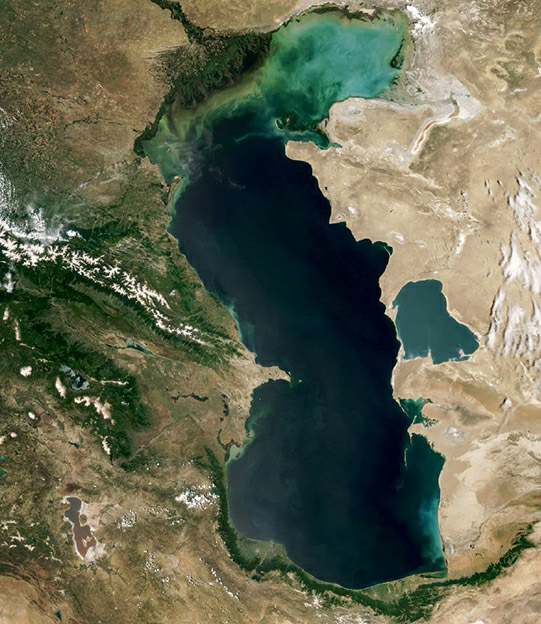The formation of the Caspian and Black Seas is intricately linked to the geological events following the breakup of the supercontinent Pangea, particularly the closure of the Tethys Sea. This process, which began around 140 million years ago with the opening of the Atlantic Ocean, set in motion plate collisions that shaped much of Earth’s modern geography, including the collision of the African and Eurasian continental plates. This monumental collision closed off a vast oceanic basin, gave rise to mountain ranges, and led to the formation of the modern Mediterranean Sea.
Additionally, the same tectonic movements uplifted the Caucasus and other mountain ranges across southeastern Europe and Asia. This led to the isolation of parts of the original Tethys Basin, eventually creating the Caspian and Black Seas, the largest inland lakes on Earth.
Both seas formed around the same time as the modern Mediterranean. However, their connection to the global ocean system differs. The Caspian Sea is landlocked, while the Black Sea is only occasionally connected to the ocean. Both seas receive most of their water from surrounding rivers and streams, but they are moderately saline, containing about a third of the salinity of ocean water. This salinity results from rehydrating the extensive salt deposits left when the original Tethys Sea evaporated over half a million years ago.
The Caspian and Black Seas hold a significant portion of the world’s lacustrine freshwater. Their deepest points reach 3,300 to 6,600 feet (approximately 1,000 to 2,200 meters) below sea level, creating anoxic conditions in these depths. This means the lower layers of water do not mix with the oxygen-rich upper layers. As a result, shipwrecks, prehistoric settlements, and other ancient artifacts are remarkably well-preserved. These inland seas have been hubs of human activity for thousands of years, making them fascinating sites for deepwater archaeological exploration and research, offering unique insights into past human civilizations and activities.

